Corporate Leaders Caught in the Middle of COVID-19 Misdirection
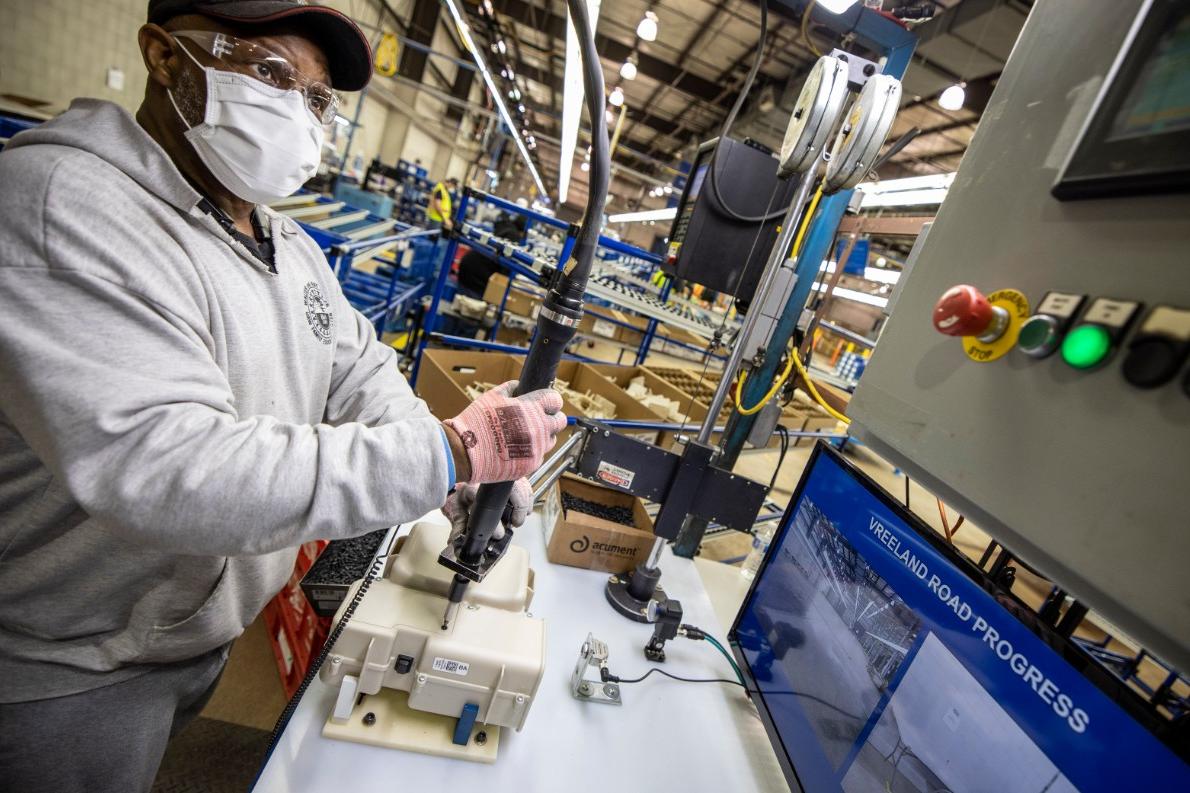
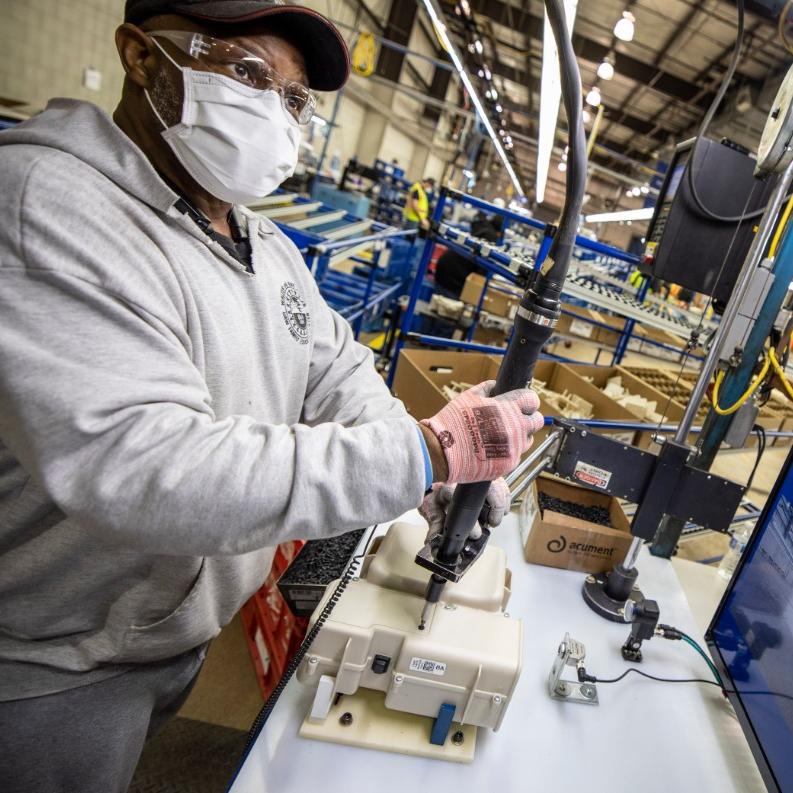
The Big Three U.S. automakers officially restarted their production lines on May 18. The meticulously planned day was carefully coordinated in collaboration with labor unions, health experts and other stakeholders. The joint effort was intended to demonstrate best practices for protecting worker safety in other U.S. industries during the COVID-19 outbreak. It should have been a shining moment for brand reputation.
Unfortunately, all did not go according to plan. Instead, the Big Three reopening served as another reminder that corporations must act more aggressively to uphold the basic principles of social responsibility when elected leaders drop the ball.
Planning ahead for a safe return to work
The Big Three automakers — Ford, General Motors, and Fiat Chrysler — were among scores of leading U.S. companies that President Trump named on April 14, when he announced the formation of “Great American Economic Revival Industry Groups.” The participants were tasked with laying plans for reopening workplaces that had been shuttered in the effort to reduce the spread of COVID-19.
Apparently the Big Three took their mission seriously. Working with experts, they agreed on a phased-in approach and circulated new safety guidelines under the title, “Return to Work Manufacturing Playbook.”
In an online introduction, Ford listed its human resources, manufacturing operations, corporate medical and safety, labor affairs, and purchasing among the internal divisions involved.
Ford also emphasized that the guidelines are “based upon the guidance provided by the Centers for Disease Control and Prevention (CDC), Department of Health and Human Services pursuant to the Occupational Safety and Health Act (OSHA), and the World Health Organization (WHO).”
In addition, Ford has previously drawn attention to its collaboration with labor unions and other groups on COVID-19 safety, as well as its experience in restarting operations in China and the European Union.
Ford, GM and Fiat Chrysler have also gathered experience in disease prevention while deploying their facilities to manufacture medical supplies during the COVID-19 outbreak, in the U.S. and elsewhere.
In short, the table was set to demonstrate U.S. manufacturing resilience at its finest.
One less mask, more hot water for Ford
Against this backdrop, on May 21 President Trump visited Ford’s Rawsonville Components Plant in Ypsilanti, Michigan, which is currently manufacturing medical supplies.
According to numerous news reports, the president wore a mask initially but removed it later in the visit.
In doing so, the president violated Ford’s safety protocols and undermined weeks of effort. He also ignored health experts from multiple agencies within his own administration, as if to publicly challenge their ability to render any useful guidance at all.
Speaking truth to power in the age of COVID-19: it’s complicated
Ford has been criticized for not ejecting the president when he violated clearly established rules for visiting the plant. At the least, the company could have terminated the visit before the president appeared in public without a mask.
They probably wish they had done so. In his public remarks, Trump evoked the virulent anti-Semitism of Ford’s founder, Henry Ford, who deployed both his newspaper and the company’s dealerships to spread his ideas.
To be fair, though, the stage for accommodating the president had already been set. The whole visit was in apparent violation of Michigan Governor Gretchen Whitmer’s COVID-19 safety orders, which included suspending factory tours and other nonessential visits.
However, on May 19 the Detroit Free Press reported that Whitmer would not attempt to prevent the president from visiting Michigan.
Brand reputation in the age of COVID-19
So, what will happen the next time the president requests to visit a business that is enforcing strict workplace safety guidelines to prevent the spread of COVID-19?
Based on his behavior in Ypsilanti, the answer should be a polite but firm “no.”
Presidents come and go, but the lifespan of a leading brand lasts for generations. After months of suffering, death, and economic upheaval, the president has yet to articulate a consistent message on COVID-19 prevention. Meanwhile, he flouts official orders against non-essential travel, and ignores workplace safety requirements that protect workers and the public against a potentially fatal disease.
CEOs at leading companies have already been tested by the president’s policies on LGBTQ rights, immigration issues, racism and gun control and other areas where the direct impact on human life is distant or difficult to quantify precisely.
With COVID-19, there is no such difficulty. The numbers are there in black and white, and the lethal consequences of presidential misdirection are literally stalking the factory floor.
Image credit: Ford Motor Co.
It’s Time to Stop Overlooking Rural America


Mariposa, California, and the surrounding county that shares its name are gems for many reasons. Let’s start with mariposa, Spanish for butterfly and a perfect name for this area, as one of the best reasons to visit this small county are the monarch butterflies and other species that make their home in the foothills. The town of 2,200 is rich in architecture that dates back to the Gold Rush era, and its county courthouse (shown above) is the oldest such building still in use in the Golden State. Mariposa is also the gateway to the spectacular Merced River canyon and the Arch Rock entrance of nearby Yosemite National Park. Larger than Rhode Island with one-sixtieth of the state’s population, Mariposa County offers a picture-perfect postcard snapshot of rural America.
Home to just over 18,000 people, Mariposa County has certainly been prepared as tourists and the outdoors industry are ready for a reopening of business. Local officials have shown how municipalities can manage through a crisis: A recent Los Angeles Times profile details how county leaders focused on managing best they could during this crisis, and in doing so raised the bar for crisis management. At a time when the idea of contact tracing is now hyper-politicized, local public health officials have managed to test at least 5 percent of its population. Contrast that with nearby Fresno County, one hub of “Reopen California” protests where less than 2 percent of its 1 million residents have been tested for COVID-19. The millions of annual visitors ready to drive to Yosemite at a moment’s notice will test Mariposa’s resilience, but the region’s private and public sectors are prepared to manage as best they can.
But like much of rural America, Mariposa County does not benefit from the community engagement and community development programs that corporations are quick to showcase when given the opportunity.
Let’s start with internet access. In a state that boasts 97 percent of its residents having access to broadband, only 10 percent of Mariposa County residents can say they do. That statistic doesn’t bode well for rural communities hoping to benefit from an influx of remote workers – and Facebook’s recent announcement that it may adjust compensation based on employees’ new locations sends a strong signal that any mass relocation of the American workforce won’t occur soon. Estimates suggest as many as 42 million Americans lack access to broadband, including about 24 percent of rural residents. Almost 60 percent of rural Americans said in a 2018 survey that access to broadband is a problem where they live; even if they have it, their internet may not perform so well.
Companies including Microsoft and AT&T say they are addressing this problem, but if they are, rural residents aren’t getting the affordable broadband memo. Microsoft’s president, Brad Smith, recently urged the U.S. Congress to fund broadband in rural communities as part of a COVID-19 relief package, but there’s no guarantee such public investments will happen any time soon, especially with federal deficits reaching unsustainable levels. Meanwhile, residents whose work, such as dairy farming, is increasingly dependent on internet access, find they have to go to extraordinary measures to keep their businesses afloat.
Mariposa County’s economy faces challenges that much of rural America confronts when the question of economic diversification comes up. The county’s economy leans largely on tourism, the public sector and retail – in that order. Fields like technology, professional services and finance – all of which lend themselves perfectly to working remotely – lag when compared to the U.S. economy and that of California’s.
The same goes for healthcare and banking, two other industries that have already been lurching toward a tipping point across much of rural America. Mariposa’s lone hospital has 34 beds, leaving it with a notably lower ratio of hospital beds per 1,000 residents when compared to Silicon Valley (Santa Clara County), a mere three-hour drive away.
In the end, this is a chicken-and-the-egg problem that cannot solve itself. Employees who could telework would be open to relocating, which would create opportunities to launch small “hubs” as companies rethink leasing space at massive office parks or skyscrapers — and discover that, yes, more remote areas certainly have talent. But these same workers need to be able to log in, and they want to ensure they have essential services like healthcare and banking. And therein lies another opportunity for companies and industries to work together for the good of all residents — and help boost their long-term profitability.
Image credit: Leon Kaye
The Clean Power Industry’s Growth Offers Lessons for the Water Technology Sector


The need to expand reliable, affordable access to clean water has been thrown into sharp focus by the novel coronavirus pandemic. Accelerated action is more urgent than ever. The question is how.
One key to the answer may be found in the global transition to renewable energy. Just 10 years ago, wind turbines and solar panels were perceived as pricey, trendy gimmicks for the well-to-do. Much has changed since then.
Renewable energy has emerged as a powerful tool for strengthening the resiliency and reliability of electricity grids, improving energy access across all income groups, remediating economic and environmental injustice, creating new jobs, and attracting top innovators.
The move toward more sustainable forms of energy is taking place on both a massive, centralized scale and on a smaller-scale, decentralized basis. To follow a similar trajectory, stakeholders in water technology and treatment could consider scaling out as well as scaling up.
Scale down to scale out
Where large-scale, centralized water treatment is concerned, one important advance over the past 25 years is the emergence of nanoscale filtration technology, a relatively new process by which water is filtered through a membrane to remove solids and contaminants. Nanoscale filtration can be used to purify drinking water, to make wastewater potable, and even to desalinate seawater or brackish water for use as a drinking source. Three scientists at DuPont Water Solutions were recently recognized by the American Chemistry Society for their contributions in this area.
A key challenge now is to reach rural areas and far-flung populations, where building major new water infrastructure can be prohibitively expensive. Here, the renewable energy sector provides a model for growth through its emphasis on locally-sourced energy that serves local needs.
In the water technology field, the portable LifeStraw filter demonstrates that it is possible to shrink effective treatment systems down to pocket-sized scale. However, cost and supply chain issues indicate that personal water filters are not a long-term global solution. To scale out, water solutions need to be simple, accessible and affordable for whole communities.
One promising avenue of interest is in the area of a microbial systems, such as this simple sand filtration system developed by Purdue University for use in rural developing communities. In another example of the microbial approach, researchers at the University of Bath in the U.K. are working to fine-tune a simple technology based on sunlight and plastic bottles to create portable, affordable filtration systems capable of producing enough clean drinking water for an entire household.
Capturing water from uncommon sources is another pathway, as represented by fog-catching systems: Virginia Tech, for example, has been exploring new fog-catching technology under the poetic moniker “fog harp,” piquing interest from stakeholders in Bangladesh, Mexico and South Africa.
Growing the water technology workforce
Another aspect of the renewable energy revolution is its emphasis on jobs and economic development. Signs are already emerging that the renewable energy trend will accelerate on the heels of the COVID-19 crisis, as both public policymakers and private-sector stakeholders focus on building a more sustainable future.
Water technology advocates could take a page from the renewable energy playbook by identifying groups — military veterans, for example — that can adapt other life skills to various occupations in water resources. Over the long run, a focus on workforce development pays off in public policy as workers become advocates, activists, ambassadors and voters.
As the Brookings Institute concluded in a 2018 study of the U.S. water utilities sector: “The country’s water infrastructure is strategically positioned to support more inclusive economic development.”
Attracting the innovators
In the U.S. in particular, another key driver of renewables is the nation’s focus on research and development through the U.S. Department of Energy. The departments of Defense and Agriculture have also contributed substantially to the efforts to scale up clean power.
A pivotal point occurred in 2011, when former President Barack Obama established the “Sunshot” program, modeled on the famous Moonshot program that sent the first man into outer space. In addition to attracting top innovators in solar and wind technology, the effort has engaged information technology experts and startups in developing new applications that help lower the cost of renewable energy and improve access.
A similar nationally coordinated effort on behalf of water technology could help raise the profile of water innovators and attract additional talent into the field. The Israeli government’s long-term water technology investments, for example, effectively created a $2 billion water business made up of hundreds of companies. In the United Arab Emirates, a massive new desalination project, partially funded by government agencies, will be able to produce up to 180 million gallons of fresh water per day when it comes online in 2022, helping the country cope with existing water stress and safeguard against future scarcity.
Renewable energy itself can also help scale up next-generation water technologies by cutting costs and improving efficiency, as a key issue with securing, transporting and storing water over the years has been its impact on energy usage.
One large U.S. water utility discloses that 90 percent of its electricity consumption and 80 percent of its carbon emissions come from the electricity it uses to run its operations. For municipalities, drinking water and wastewater plants can account for as much as 40 percent of their total energy consumption, and these water systems nationwide generate 2 percent of energy use within the U.S., according to the Environmental Protection Agency. Bringing innovators from both sectors together can mitigate energy impacts while delivering clean water cheaply and efficiently.
Gaining interest from investors
From an investor interest perspective, wind turbines and solar panels have an advantage because they are visible. Much of the world’s water technology infrastructure, in contrast, is located underground or hidden behind the walls of nondescript buildings, and most people simply don’t know much about it or how it works.
The World Wildlife Fund's work in connecting water access with habitat preservation offers one potential solution. These efforts, such as the installation of constructed wetlands and the establishment of watershed-wide partnerships around conservation, come with an added bonus of providing a visual handle for investors focused on environmental, social and governance (ESG) factors, said Evan Freund, senior director for infrastructure and large initiatives on the WWF’s U.S. freshwater team.
"When we have engaged with some of the big asset owners and investors, they recognize the pressure they’re getting,” Freund told TriplePundit. “The big pension funds are increasingly ESG-oriented, and there is clearly a recognition that bankable, sustainable projects have to be at the forefront in their portfolios.”
Under the umbrella of green infrastructure, habitat conservation can involve whole-of-community benefits in terms of cutting costs, creating jobs, attracting innovators, improving public health, and providing a buffer against extreme weather events.
Fixing the management
In Freund’s experience, there is plenty of room for growth in the green infrastructure field. The overarching challenge, though, is one of policy.
As tragically illustrated by the experience of Flint, Michigan, public ownership of water infrastructure is no protection against bad management. “What’s fundamentally important is the governance about the delivery of public services,” Freund explained. “Nothing is more important than water supply.”
For advanced water technologies to follow a similar path to renewable energies and reach communities in need, all of these aspects — workforce, innovation, ESG investment and policy — must work together. The technologies are there. We just need the collective commitment to make it happen.
This article series is sponsored by DuPont Water Solutions and produced by the TriplePundit editorial team.
Image credit: Science in HD and Shotlist via Unsplash
What's New With Loop? How the 21st-Century Milkman is Coping With COVID-19


Consumer sentiment began to trend away from disposable packaging — particularly plastics — over the past few years, as images of waterways choked in waste circulated in the media. In a survey conducted by PBS NewsHour last year, two-thirds of U.S. respondents said they'd be willing to pay more to avoid single-use plastic packaging in everyday products.
Then came the novel coronavirus, and with it a resurgence in single-use systems. Cities including Philadelphia, Albuquerque, New Mexico, and Bellingham, Washington, have delayed or suspended plastic bag bans out of fear that the virus could transfer from surfaces to reusable shopping bags and ultimately infect consumers. Major outlets including Starbucks have temporarily banned reusable cups due to similar concerns for health and hygiene.
The plastics industry has seized the opportunity to pressure lawmakers to permanently undo bag bans and similar legislation. But others, including executives at the reusable packaging platform Loop, aren't buying it.
"Single-use is not sterile either," Heather Crawford, Loop’s global VP of marketing and e-commerce, told TriplePundit. "When you buy a disposable package off the shelf, it's been exposed to all kinds of different elements across the supply chain, including packing, transport, or even the customer who picked it up before you and put it back. Reuse in and of itself isn't the problem. It's the method by which it's done."
We spoke with Crawford by phone to learn how the platform often dubbed the milkman of the information age is coping with surging demand for at-home delivery in the midst of the coronavirus — and how safe, hygienic reuse systems can help to prevent a backslide in consumer behavior around single-use packaging.
Loop provides a safe and sustainable alternative during the coronavirus crisis
For those who aren't familiar with Loop, here's a general rundown of how it works: Subscribers choose mainstream grocery, personal care and household products in an online store, and the items are shipped to their door in a reusable tote. When the products are gone, customers simply place the containers back into the tote and schedule a free home pickup through Loop's logistics provider, UPS. Loop sends the packaging through an industrial cleaning process before shipping it back to brands to be refilled, and then the cycle begins again.
"I wouldn't say we've made any structural or operational changes" due to the coronavirus, Crawford said, "because a lot of the elements of the reuse system are already in place for consumer health and safety." Even outside the context of a global pandemic, reuse systems like Loop's must be hygienic in order to keep customers safe and retain public trust, she told us.
"Another thing that's important to consider is the dwell time," Crawford added. After packages are picked up and shipped to Loop's cleaning facilities, it's "typically been anywhere from several days to much more likely several weeks" before they're opened, inspected and put into the cleaning process, she explained. "In the return phase, in the cleaning phase, even in reshipment, there's a much longer dwell time than the disposable package that was placed on the shelf an hour ago by the store associate."
Epidemiologists estimate that the coronavirus can survive a maximum of three days on plastic and stainless steel surfaces, so this is an important factor to note — for the safety of warehouse employees as well as customers.
"The critical element in changing consumer mindsets is that they can trust the hygienic standards of the reuse system," Crawford said. "One global trend that we're seeing is we're watching the stay-at-home orders force us to reduce our environmental footprint, which has resulted in a tremendous positive benefit to the environment — and that's not going unnoticed by consumers. Many are now seeing this as an even higher priority, looking for more sustainable and responsible ways to purchase the things that they need — and I think certain types of reuse systems will survive, where there's trust."
Protecting employees when it matters most
Along with the dwell time already baked into the system, Loop says it's taking additional steps to keep employees safe. All employees who can work from home are doing so, but those working in Loop's cleaning facilities and logistics warehouses — where products are packed into reusable totes and shipped — are essential to keep the company's supply chain running.
For these employees, "we have really vigorous health and safety protocols in place," Crawford said, which include providing adequate healthcare coverage and protective equipment for every person and ensuring social distancing while at work.
If a confirmed coronavirus case or exposure is reported at any of Loop's facilities, the company is ready with protocols to ensure product quarantine, standardization and evaluation of all staff. "Luckily we haven't needed to undergo any of these processes, but we do have all of these policies in place," she told us.

Meeting demand, eyeing expansion
As people shelter in their homes, home delivery for groceries and household products is surging — and Loop is no exception. "We are experiencing record high demand on the platform," Crawford said, with sales nearly doubling in April compared to March.
"Like many retailers, our greatest challenge has simply been keeping up with the demand and restocking product inventory as quickly as we can," she said. "We've definitely experienced out-of-stocks in top-selling products."
For the most part, though, customers looking for grocery and household staples like snack foods, dried beans, pasta and cleaning products will find them in stock, and the Loop platform adds new branded products nearly every week, which has continued through the pandemic.
Over the past three weeks, the Plaine Products bath and body line (pictured above), as well as Seventh Generation laundry detergent and the Oral-B Clic Toothbrush, have newly arrived on Loop. The platform which already sells well-known brands like Crest, Tide, Glad and Gillette is also continuing to add new brand partners.
"We have continued to ink new partnerships at a really steady pace even since the stay-at-home orders began back in March," Crawford said. "In addition to continuing to sign on new brands, we also have hundreds of brands in our pipeline that are currently working on developing their durable packages," as it can take companies a while to redesign their packages to be reusable.
Along with the expansion of brand partnerships and its own private-label collection, Loop is expecting big things ahead. Having launched in 2019 across 10 U.S. states in the Northeast and Mid-Atlantic, the company recently announced it would expand across the entire continental U.S. by this summer.
For her part, Crawford expects demand for reuse systems like Loop's to remain steady, and perhaps even increase, during the pandemic. "Consumers are understandably anxious in this new world, but they still want to make purposeful purchases," she told us. "If you can meet shoppers where they are — which is, right now, at home and online — and also establish trust in the safety and hygiene of the reuse system, even in a difficult situation, what we're seeing is that consumers still really embrace it."
Images courtesy of Loop
Plant-Based Protein Companies See Opportunities in a Crisis
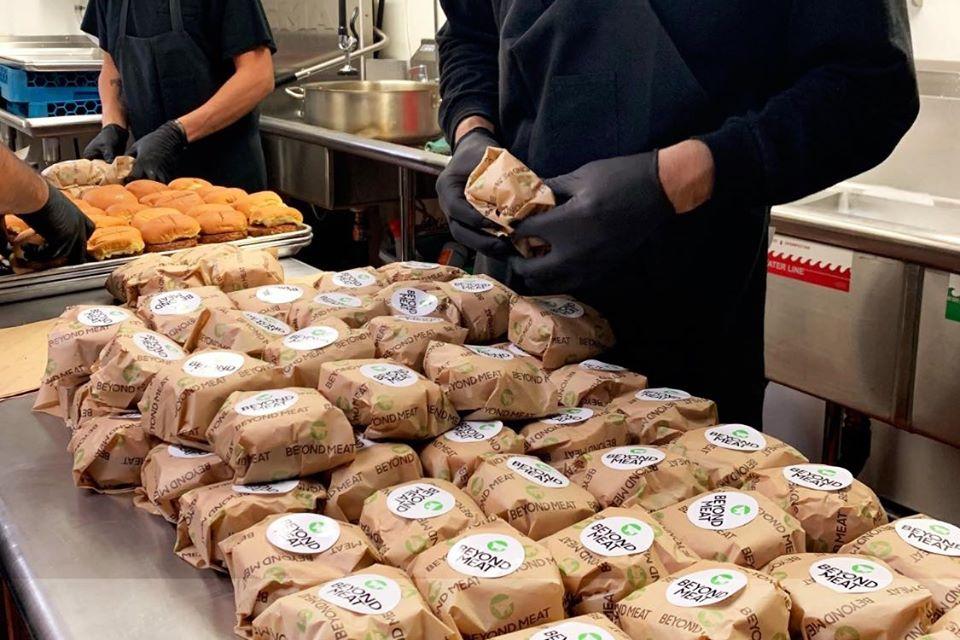

As we linger in the third month of this global public health crisis, many of us still find gaps in our local supermarkets’ shelves – the usual suspects naturally being paper products, frozen vegetables and within the meat section. As the U.S. meat sector in particular confronts one fiasco after another, one nascent industry is having a field day: Plant-based protein companies are raking it in.
According to Nielsen data that the Wall Street Journal reported earlier this month, plant-based protein companies are seeing a huge surge in sales — 264 percent to be exact as of May 2. Some of this increase has its origin in the errors the meatpacking industry has made, including the failure to enforce social distancing guidelines, which caused COVID-19 outbreaks to unfold at some of the largest meat processing companies in the U.S. Accusations over the poor treatment of employees also hasn’t helped boost the sector’s reputation. The industry’s own admission that its supply chain is struggling has also led to fears that millions of animals could be needlessly slaughtered while food insecurity is on the rise.
“I’d always been trying to block out a lot of what was going on behind the scenes of the meat industry, but I can’t ignore it forever,” one consumer said to the New York Times in a recent interview. Nowadays, however, consumers who feel repulsed by what they perceive to be the meat industry’s cruelty to animals and workers alike have more options — and when it comes to taste, these fake meats can hold their own.
But plant-based protein companies can point to other factors accounting for their rise. While meat companies are susceptible to such risks as disease outbreaks, drought and the lifecycle of farm animals, the makers of plant-based alternatives can by and large dodge those bullets. Sure, bad weather can lead to price increases, but a company like Turtle Island Foods (the maker of Tofurkey) or Beyond Meat can pivot quickly and buy ingredients elsewhere. For a surge in demand, there’s no need to build another new expensive processing plant – these companies can add more shifts. As Matt Simon of Wired recently pointed out, for better or worse, the manufacturing of plant-based protein products is far less labor-intensive than the butchering of animals. “Facilities that produce plant-based meat rely heavily on machinery to mix and extrude ingredients, so employees aren’t standing as closely together as they would be in a meatpacking plant,” Simon wrote last week.
This trend is hardly unique here in the U.S. In fact, the evidence suggests plant-based protein companies are having a moment in Asia as well. Concerns about meat safety are on the rise, nudging more consumers to have a more open mind about alternatives made from soy or pea protein. With Starbucks reportedly working on an agreement with Beyond Meat to have its products appear on its menus in China, the plant-based protein revolution is moving beyond what just a year ago we could have dismissed as edgy public relations moves.
The path forward for plant-based protein products is still not entirely without roadblocks. Millions of unemployed consumers could balk at what for many of them is a premium to pay for faux meat. An unforeseen shock such as a sudden food safety problem could also turn consumers off. And even though the White House has floated the idea of slashing cattle imports, U.S. policies often shift at the whims of its current occupant – and in any event, many consumers are open to purchasing meat sourced from Mexico and other countries. At the same time, as more consumers stash plant-based alternatives in their refrigerators and freezers, the changes are high that come mealtime, they’ll find that moment of desperation ended up tasting better later on than they had first assumed.
Image credit: Beyond Meat/Facebook
Like a Well-Planted Tree, Corporate Sustainability with Deep Roots Will Outlast the Pandemic
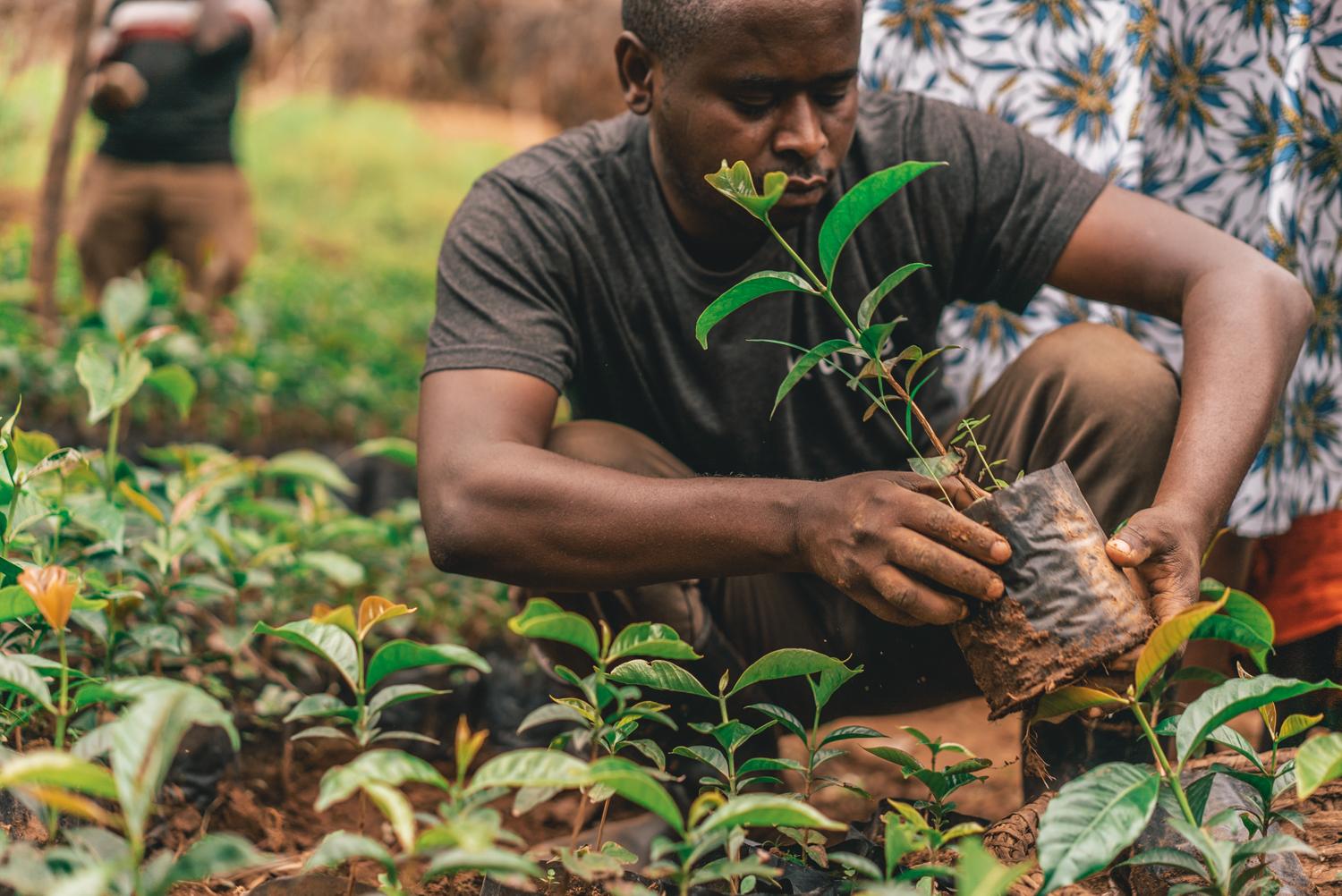
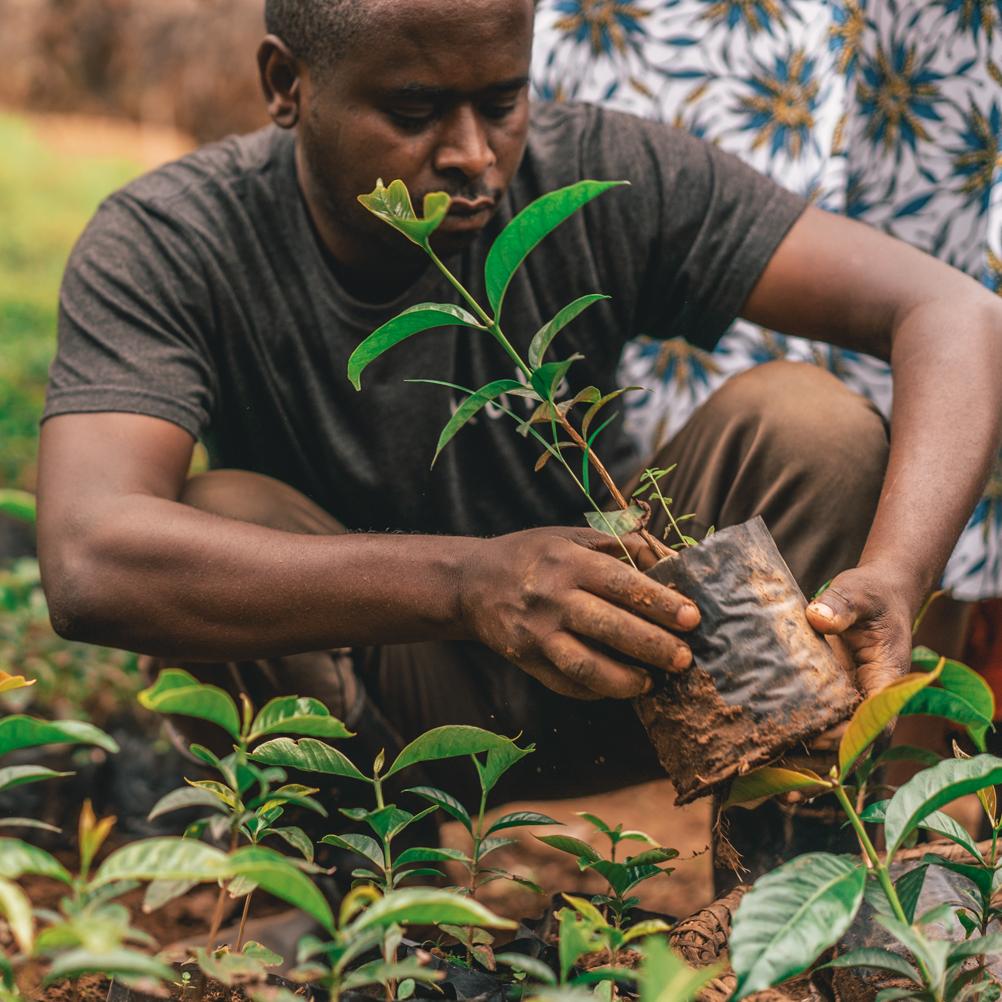
There have been rumblings in recent weeks that corporate sustainability initiatives will be pushed aside or abandoned in favor of pure economic survival. But that’s not how Matt Hill, CEO of One Tree Planted, a nonprofit focused on global reforestation, sees it.
One of the largest tree planting organizations in North America, the organization said that during 2019 it planted over 4 million trees worldwide, thanks in part to successful partnerships with businesses. Hill says he is “busier than ever” despite the COVID-19 pandemic, connecting with companies like Nestlé, which recently pledged to plant trees across Latin America, as well as AstraZeneca, with its 50 million tree initiative that the company says part of its five-year commitment to global reforestation.
“Our followers are fiercely passionate about change,” Hill told TriplePundit. “If anything, the pandemic has highlighted how important human action really is. This is a wake-up call, a glimpse into a cleaner planet. And it’s not lost on us how the unity witnessed here in light of the pandemic can be applied towards addressing climate issues as well.”
Companies are facing undeniable economic pressures due to the pandemic, but that doesn’t mean sustainability programs are the first on the chopping block. If they are, it is likely those brands that used sustainability as a marketing tool rather than making it integral to their processes, Francois Souchet, Lead of Make Fashion Circular at the Ellen Macarthur Foundation, told Forbes. “The closer (sustainability and investment) are to the core and the more integrated, the harder they are to cut off.”
Key to corporate sustainability: give your team a cause to rally behind
Even if sustainability drops off the agenda temporarily, it should rebound, according to many business and sustainability leaders. In dozens of recent conversations with Fortune 500 chief sustainability officers, Politico found them to be “surprisingly unified, agreeing that the pandemic has accelerated their environmental plans rather than putting them on the back burner.”
For Hill, now is the time to lean in on corporate sustainability, as it’s important to keep employees engaged when so many of them are working remotely. “Just because it feels like our world has come to a screeching halt, and in many ways it has, that doesn’t mean climate change will take a break. As we come off of the 50th anniversary of Earth Day last month, it’s important to reflect on how the businesses of today can influence the next 50 years,” he said.
“Humans are responsible for the state of the earth, and businesses are equipped to make a big impact, quickly. It’s also our experience that corporate sustainability programs help build team morale internally and give employees a common and positive goal outside of their everyday workflow,” Hill continued. “Now, probably more than ever, your team is likely looking for something to rally behind – even if they rally remotely.”
Reforestation can head off future pandemics
Much more than a feel-good initiative to engage employees and local communities, reforesting the planet is critical to reverse biodiversity loss and head off the worst of climate change. According to a study published in Science by the Institute of Integrative Biology in Zurich, Switzerland, the solution to climate change is to plant one trillion trees. And especially timely now, the majority of research shows that deforestation contributes to zoonotic diseases, as infectious disease researcher Amy Vittor shared on One Tree Planted's video podcast. In addition, Nigel Sizer of the Rainforest Alliance recently told Ethical Corporation that to prevent future pandemics, “no company should source from recently deforested land.”
“It comes down to the encroachment of wildlife habitats,” Hill says. “The more we come into close contact with wildlife the more susceptible we are to pathogens. But reforestation is all about re-establishing nature after some disturbance, create more habitats for wildlife, re-establish native forests, and to achieve a balance between nature and people.”
For Hill, simply planting a tree—or a hundred or a million—is an important way for business to keep their sustainability programs rooted in an uncertain time. “My advice would be that you don’t have to come up with a huge daunting plan to get started, just decide that it’s something you want to start and take the first step. Plant some trees, share your story, get your team on board. This is a great time to pause and plan for the future, so make it a future you feel good about.”
Image credit: One Tree Planted
It’s the End of Recycling as We Know It

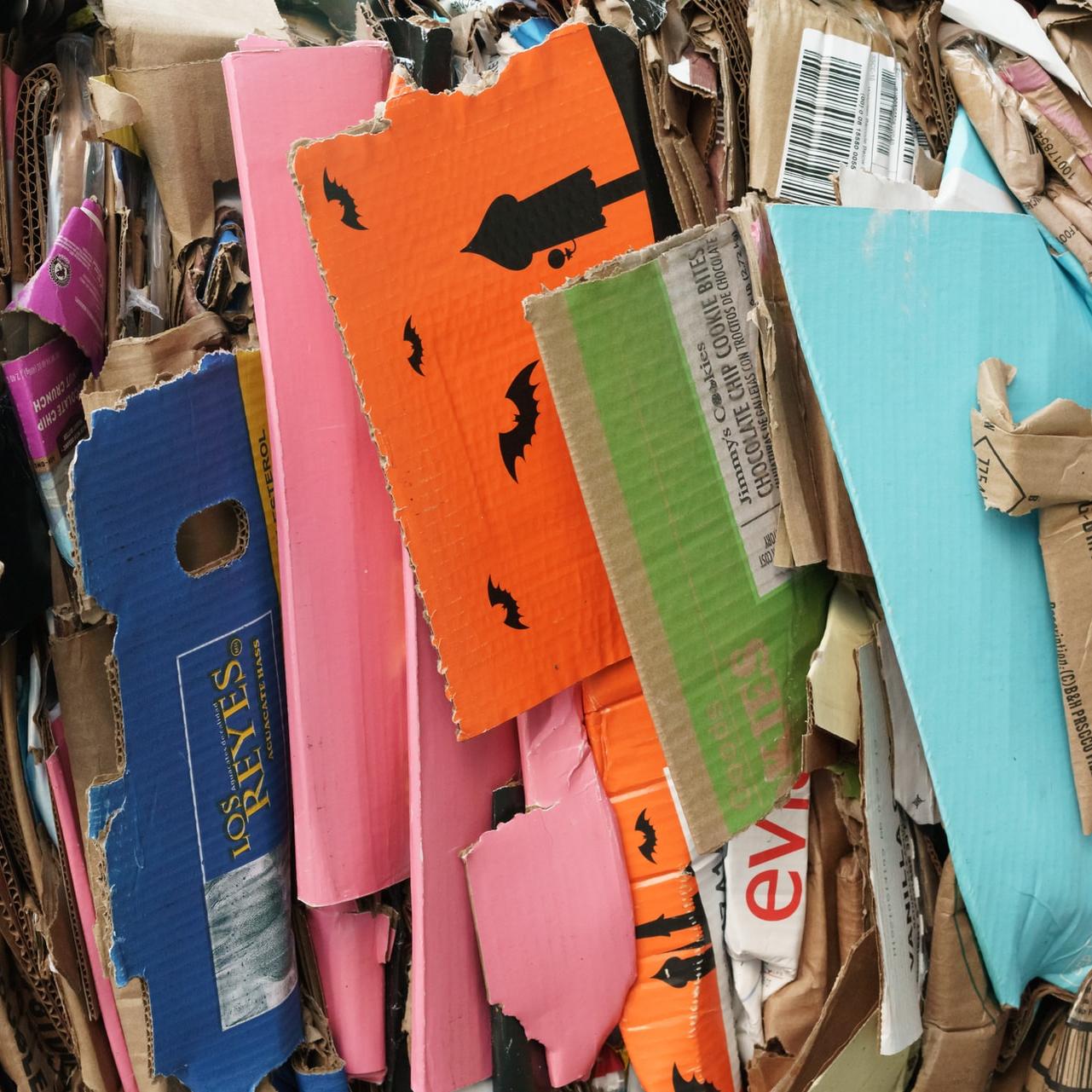
Analysts were already predicting the end of recycling last year, when mountains of waste began to pile up after China and other countries began refusing to accept such shipments from overseas. The COVID-19 outbreak has further complicated global recycling markets. However, there are indications that the recycling industry can emerge from the crisis as a stronger and more resilient force than ever before.
Not all recycling is created equal
First, it is important to note that every recyclable material has its own market. The COVID-19 crisis has had a differing impact on different types of recyclables.
Paper is a case in point. The crisis has touched off a surge in demand for paper products typically made with recycled fibers, like toilet paper and cardboard shipping boxes.
The demand side is just one aspect of the COVID-19 effect, though. The crisis has also had an impact on the incoming stream of paper for recycling, as workers around the globe are confined to home. The recycled paper supply chain was stronger when more workplaces were open. With more people working from home, less paper is available for recycling.
Expanding the market for recycled paper with new technology
That demand-supply tension could remain challenging for paper manufacturers, all the more so as new recycling technology emerges.
One especially interesting development is a new recycling facility planned for the city of Lancaster, California. It will take in mixed paper from the municipality and subject it to a patented gasification process, to produce reclaimed hydrogen.
Hydrogen is used in many common industrial processes, from steelmaking to food production. Its role in the transportation sector has also been growing.
Fossil fuels comprise the main source of hydrogen today, but green hydrogen alternatives are emerging. So far, the activity has mainly focused on splitting water with an electrical current, deploying wind or solar power.
The gasification option could provide an additional commercial pathway for green hydrogen, while also helping municipal governments develop more sustainable and economical waste management plans.
The company behind the hydrogen project, SGH2, also has its eye on gasifying other types of waste.
There is keen interest in the success of the SGH2 project across the industry. In addition to support from the city’s policy makers, the project is being shepherded by a public-private consortium that includes the Department of Energy’s Lawrence Berkeley National Laboratory, UC Berkeley, and the companies Fluor, Thermosolv, Integrity Engineers, Millenium, HyetHydrogen and Hexagon.
Upcycling for better foam recycling
Another interesting technology breakthrough is taking place in the area of polyurethane foam recycling.
The foam problem is a significant one because of its sheer size, as polyurethane is the common denominator in mattresses and cushions among many other items.
Foam resists melting and reformation, so it cannot be recycled like other plastics. Until now, the main approach has been to shred it and downcycle it in the form of carpet padding and similar products, or simply burn it for energy.
The solution may be at hand. Researchers at Northwestern University and the University of Minnesota have developed a new process that transforms foam into a durable, moldable plastic, creating new pathways for upcycling.
As with the paper-to-hydrogen project, the new approach does not simply reduce a material into smaller bits. Instead, it transforms the material into a new substance that can then be deployed for other uses.
Making industrial waste better than new
Industrial waste is another area in which the transformative approach could have a significant impact.
One recent example comes from an Australian research consortium, which has combined waste cooking oil, waste sulfur, and the petroleum refinery waste chemical dicyclopentadiene to create a new kind of rubber.
According to the researchers, the new rubber is durable enough to use for car tires.
The new rubber can also self-repair seamlessly and return to its original strength within minutes, by applying a simple catalyst at room temperature.
Flinders University, which hosts the research, notes that every year the equivalent of 48 million tires reach the end of their useful lives in Australia alone, and only 16 percent are recycled. Making tires with a more durable, repairable form of rubber would have a significant impact on the tire disposal problem as well as providing a new market for industrial waste.
Bio-based solutions for plastic waste
This kind of two-tiered thinking is also evident in the field of bio-based recycling, where microbes and natural digestive processes do the heavy lifting.
One recent example is an entire food system envisioned at Pennsylvania’s Clarion University, where researchers are exploring the use of moth larvae that can digest polyethylene.
The new system is a complete waste-to-food cycle in which larvae at recycling centers are eventually fed to chickens for human consumption.
The discovery of a plastic-eating microbe by a Germany-based research team holds similar promise. The research is part of a broader European Union effort aimed at breaking down petrochemical waste into biodegradable materials for re-use.
As the bottom line motivation for green products and packaging continues to accelerate, look for new, transformative recycling pathways to emerge. Recycling as we know it may be going away, but only because the recycling industry of the future is beginning to take shape.
Image credit: Michael Jin/Unsplash
Infrastructure Investments Crucial for Future Sustainable Development
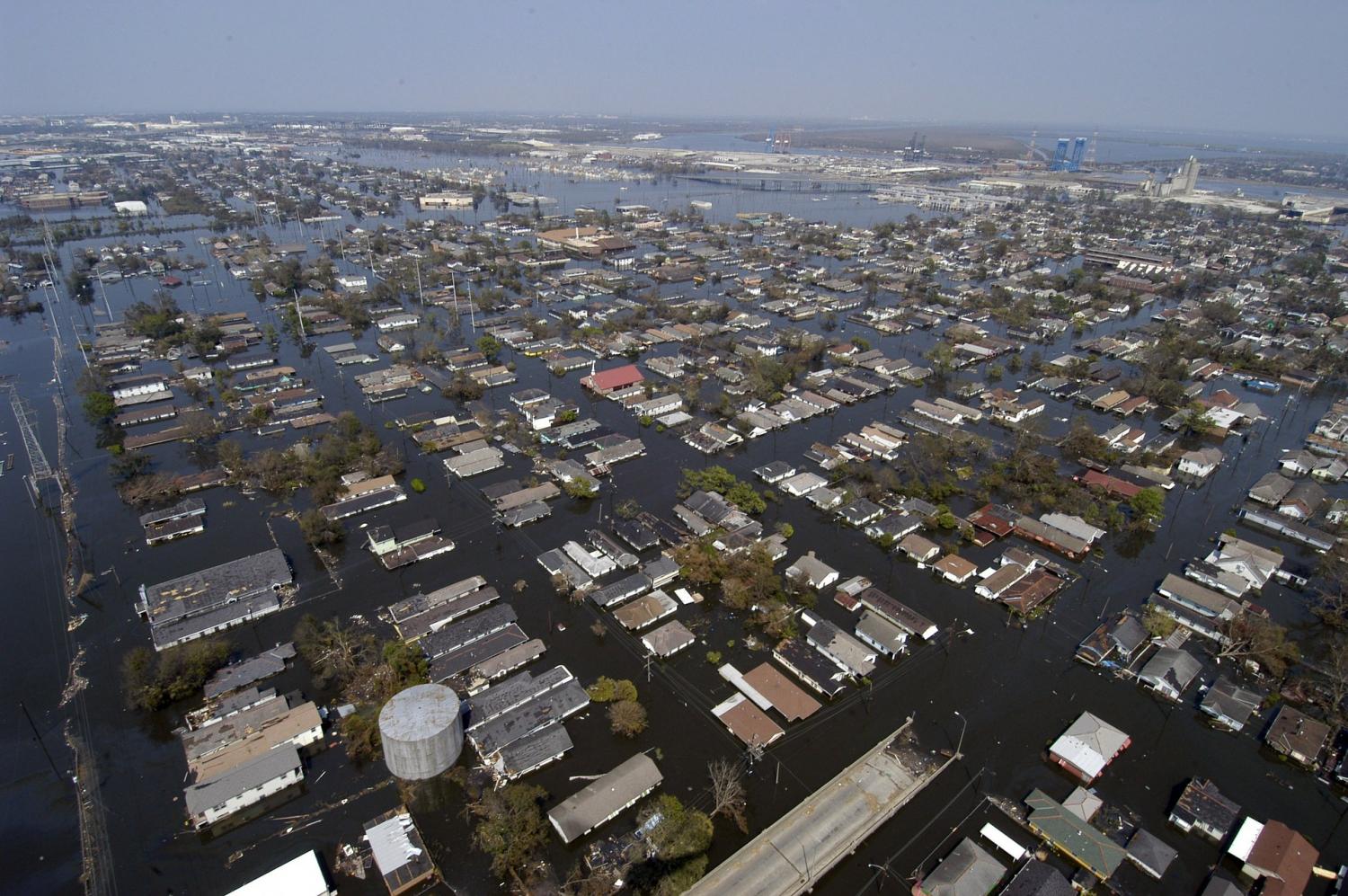
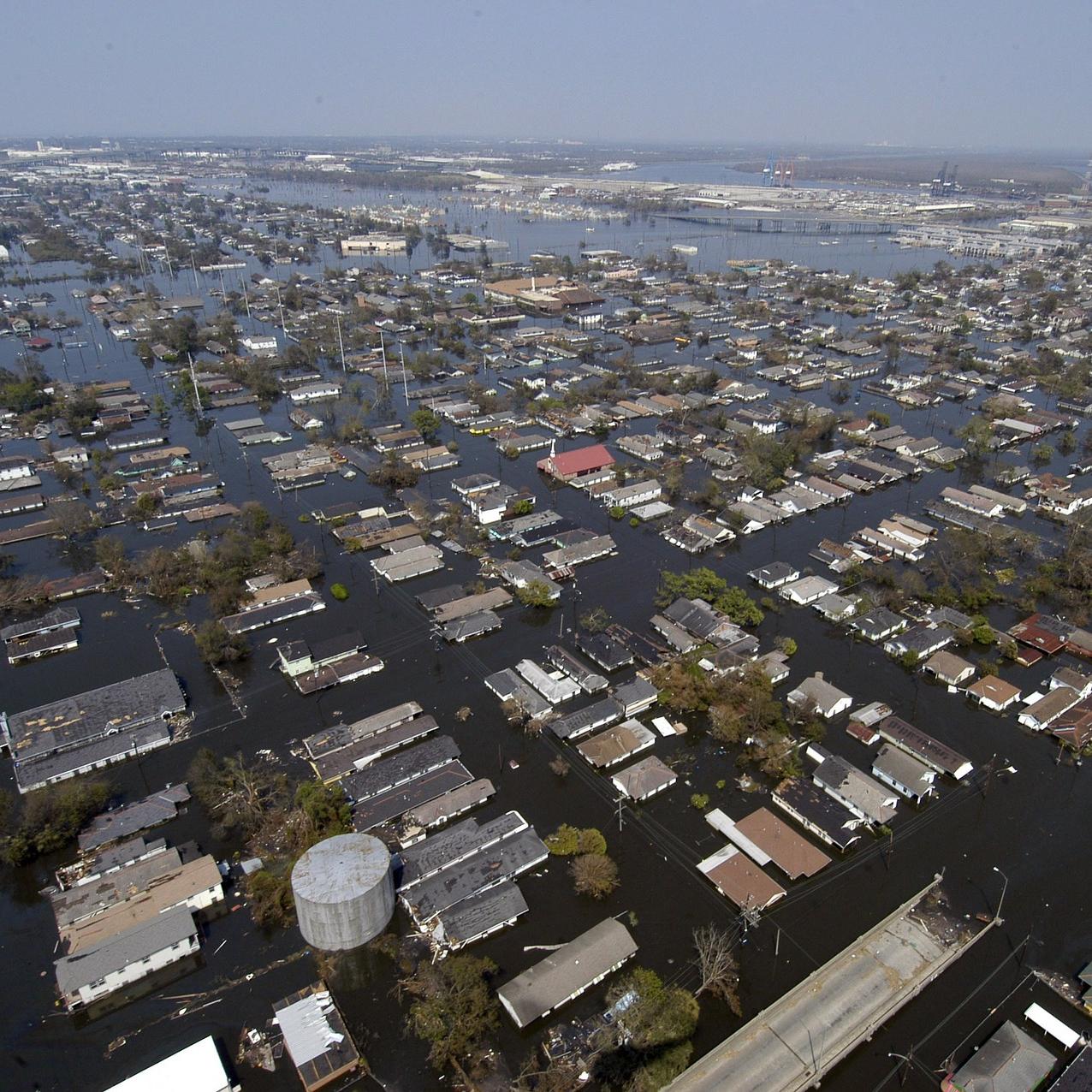
Every pundit and economic analyst is weighing in on what should be included in the next round of stimulus funding to address the economic concerns related to the COVID-19 pandemic. So far, $3 trillion has been earmarked or disbursed and a similar amount is expected if there is a next round. Some proponents are now making the case that infrastructure investments should be part of upcoming stimulus packages.
These advocates point to the American Recovery and Reinvestment Act of 2009 (ARRA) as an example of where priorities should lie. That bill contained $90 billion in clean energy investment stimulus, and was the single largest energy bill in history, invigorating the renewable energy sector and paving the way for the explosion in electric vehicles.
A group of experts the World Resources Institute (WRI) recently convened said Congress should learn from ARRA, which leveraged private sector spending to increase jobs and make the country’s infrastructure more resilient to the effects of climate change. In the 11 intervening years since the legislation passed, climate change has devastated parts of the U.S., from a run of catastrophic hurricanes to extreme flooding to wildfires, so arguably, there is more pressure now to shore up energy, water and transportation with smart infrastructure investments.
The nation’s electricity grid is far too old and is under strain
According to Sue Tierney, Senior Advisor at the Analysis Group and former Assistant Secretary for Policy at the U.S. Department of Energy, one of the keys to building resilience is a better grid. In addition, Tierney insisted that investing in renewable energy can become a job multiplier. On that point, an April 2020 study from WRI found that annual investments from $12 billion to $16 billion in electric transmission through 2030 could result in $30 billion to $40 billion in annual economic activity. And during a decade when job creation will be a huge challenge, such investments could create between 150,000 and 200,000 full-time jobs each year.
Despite the improvements we can attribute to ARRA investments, the nation’s energy infrastructure still has a long way to go. The American Society of Civil Engineers’ (ASCE) 2017 Infrastructure Report Card gave it a D+ grade, and noted that the bulk of it was built during the 1950s and 1960s with a 50-year life expectancy. In addition to anticipated increased demand for electricity to power our air conditioning under higher temperatures and more intense droughts, our current energy mix is mostly natural gas and coal, both of which are highly-water intensive resources. This puts additional pressure on already stressed water infrastructure.
Michigan is Exhibit A of the need for more infrastructure investments
The failure of two dams in Michigan this week only serves to highlight the precarious position of America’s current water infrastructure. Response to the flooding caused by the dams’ failure is compromised due to this pandemic. This crisis in Michigan is a stark reminder of what we may be facing with above-normal hurricane season this year - one which has already seen its first named storm almost two weeks before the official start of the season on June 1st.
ASCE’s latest report gave the nation’s water infrastructure a D grade, citing its age in particular. Built mostly in the early part of the 20th century with a 100-year life expectancy, we have seen devastating results of its failure as it wears out, sorely tested by extreme flooding and drought. Water is a critical input for traditional electric generation, but energy is also essential for treating, moving and distributing water. Shoring up one sector’s infrastructure improves the resiliency of the other.
Considering infrastructure investments going forward
Joe Aldy, Public Policy Professor at Harvard’s Kennedy School for Government and special assistant to President Obama for energy and environment during the 2007-2009 recession, said it is important to consider where we are today versus where we were in 2009. An infrastructure stimulus requires a “thoughtful response,” he said. “It has to go beyond emissions to approach resilience and deal with the risk of climate change”.
Such an approach will require, as it did in 2009, significant engagement with the private sector. Failing infrastructure will threaten business operations across the country and create challenges for local, state, and regional governments. One long-lasting effect of this pandemic is the severe strain it is placing on the economy. Climate change will make that strain worse. There’s an opportunity now to alleviate one challenge by taking on the other with a solid, long-term plan for infrastructure investments across the U.S.
Image credit: David Mark/Pixabay
The Recreation Industry Wants Us to Reconsider How We Enjoy the Outdoors
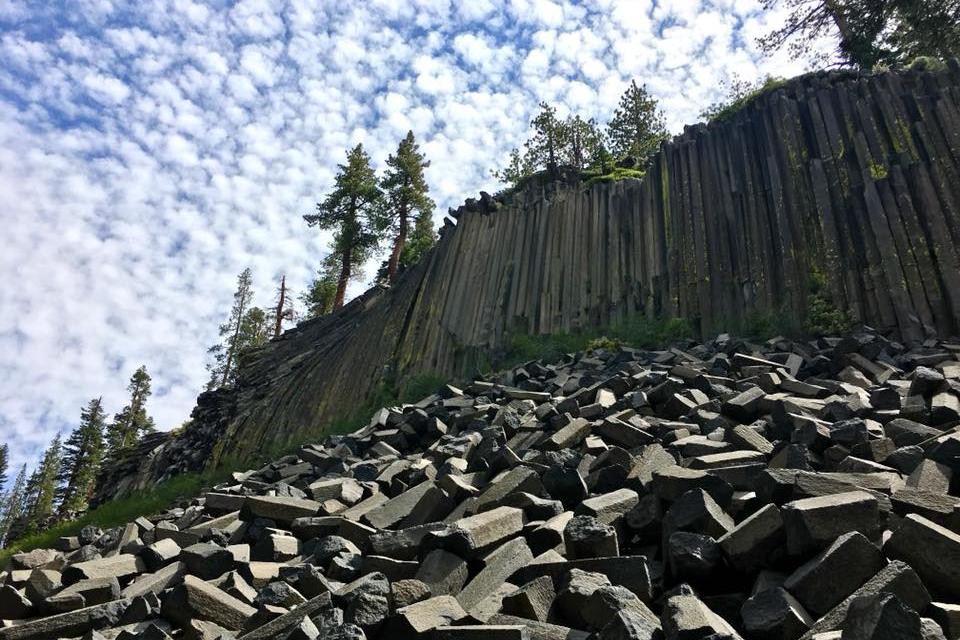

Cabin fever is hitting many of us big time, and this coming Memorial Day weekend will be triggering as we crave barbecues, hikes and camping as the weather warms and seek stimulation other than videoconference meetings. Some public spaces in states and counties are re-opening faster than others, and the reality is that many of us just want to get away from our living rooms, trade in sweatpants for hiking shorts and indulge in nature. Several outdoor groups and companies within the recreation industry, however, are insisting we tread carefully as we enjoy those parks and open spaces once again.
To that end, this Recreate Responsibly site launched with the goal to remind people that enjoying the great outdoors entails a different approach than it had just a few months ago.
This coalition, which includes REI, The North Face, the Outdoor Industry Association and the National Park Foundation offer the outdoor enthusiast in all of us a six-point plan about how to approach our next day trip or camping weekend.
Some of the advice is common sense, such as checking to make sure the place is open before you venture that way, though now things are a tad bit more complicated as many parks and recreation areas will cap how many visitors can enter at one time. Other advice is timeless, such as the “leave no trace” mantra we should all be respecting while we are out in nature, with the caveat that it’s a good idea to take that trash with you as services such as trash collection may not run as frequently.
Additional advice from the recreation industry reminds us that we’re in a different era now: That risky selfie we are tempted to take isn’t the best idea, as first responders such as healthcare professionals are stretched to the limit – the same goes for park rangers and search-and-rescue crews. Long road trips, such as a popular one through Yosemite National Park and across the Sierras to the Devils Postpile (shown above), should be eschewed in favor of more localized day trips, the groups suggest.

Photo: Risky selfies at dodgy locations should be avoided at this time, as one can read between the lines in this new Recreate Responsibly framework (Photo: Leon Kaye).
Much of this new set of directives takes its cue from a coalition in the state of Washington, in which various groups pulled together to offer the general public guidance on how public spaces are reopening and what visitors should expect in the coming months.
“When each person acts in a responsible way, it helps ensure we are able to promote safety and are able to continue welcoming people to our public lands," Washington state’s commissioner of public lands, Hillary Lanz, said in an emailed statement to TriplePundit. “In Washington state, our recreation community has come together in an extraordinary way to promote responsible recreation. I truly believe this work can serve as a model for the rest of the country and help keep all our communities safe while also allowing us all to enjoy the outdoors.”
The forces behind the Recreate Responsibility initiative are filling a void that many state and federal agencies can’t fill while employees are working remotely or as government budgets are axed. Popular sites such as recreation.gov offer little more direction than COVID-19 advisories as online chat and telephone support are suspended.
“As our public lands and waters reopen, we’ll all benefit from clear, easy-to-follow guidance on how to recreate responsibly – whether you’re a seasoned outdoor enthusiast or a family heading to your local park,” said Eric Artz, president and CEO of REI.
Image credits: Leon Kaye
Responding to a Pandemic With Solidarity and Purpose: The Evolving Power of Corporate Responsibility
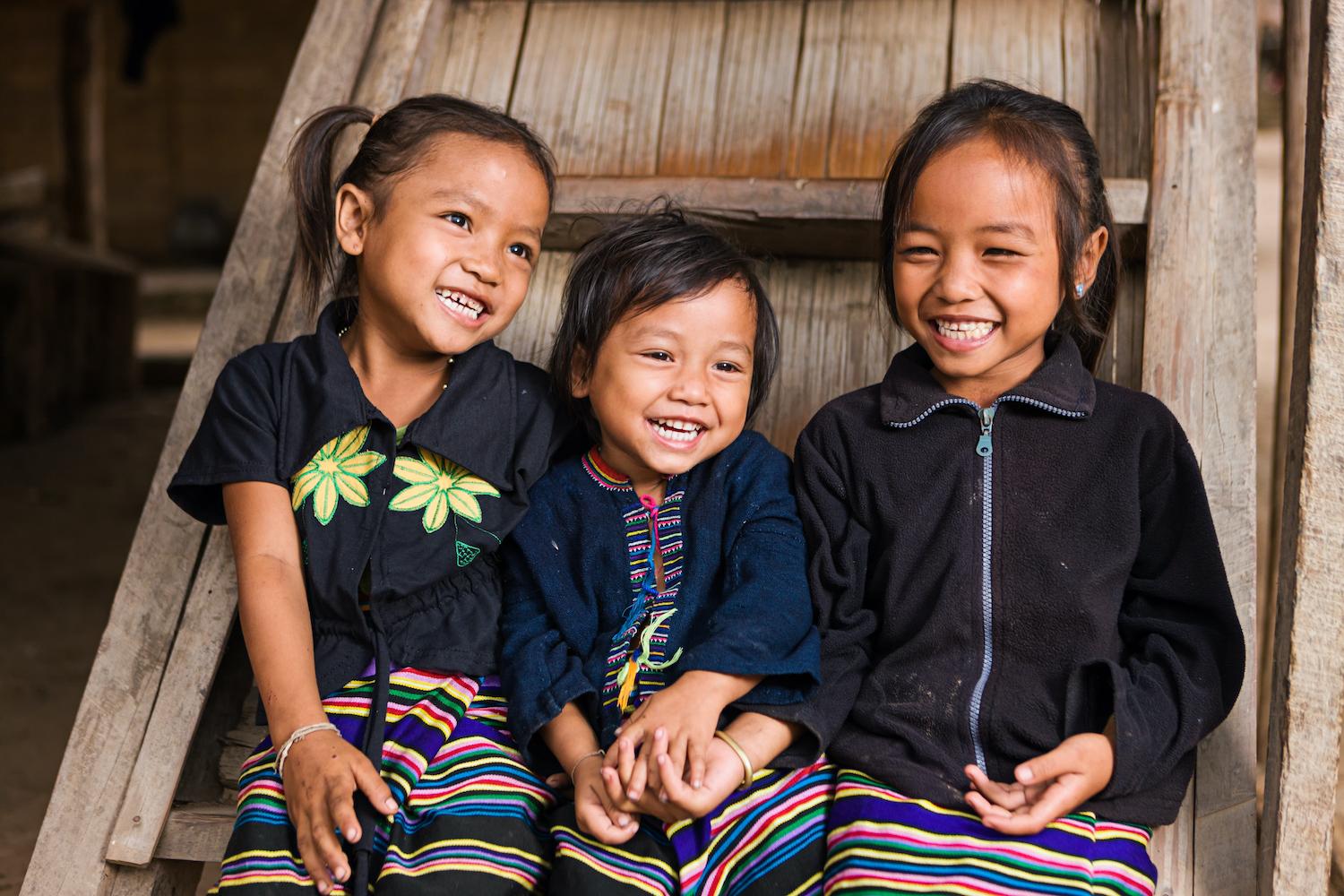

Solidarity is top of mind these days, a gentle reminder that, as the world struggles to respond to and rebound from the COVID-19 pandemic, we are all in this together. Our inherent interdependence has never been more apparent, transcending physical barriers as we seek new ways to connect with each other and stay healthy.
This groundswell of solidarity has been gaining momentum throughout the global community in recent years. The adoption of the United Nations Sustainable Development Goals (SDGs) in 2015 established an historically ambitious blueprint to achieve a better, healthier and more sustainable future for all. In their universality, the SDGs highlight our interconnected nature and call for a multi-sectoral response that leaves no one behind.
Humanity has responded accordingly. According to data compiled by the Organization for Economic Co-operation and Development (OECD), nearly 4 in 10 citizens across 16 countries believe that all governments should fund the SDGs. Ninety percent think it is important for businesses to sign on to support the goals.
Among shifting political agendas, the world has demanded even more of its citizens. Individuals and corporations alike have been called upon to address issues like climate change, promote inclusive economies and ensure access to healthcare for all. As communities have gathered to raise a unified voice for change, inspiring young activists like Greta Thunberg and Malala Yousafzai have challenged us to think differently about the future we are shaping for the next generation — one that includes more meaningful and transparent corporate engagement.
A new era of corporate social responsibility
With communities and individuals taking stands, so are brands. Companies are increasingly evolving their traditional philanthropic efforts to more strategic investments and looking across the entirety of their value chains to leverage them for good.
It has become clear that corporate responsibility is no longer a choice. In an evolving, more interconnected, globalized and informed world, companies aren’t beholden exclusively to their shareholders, but rather to their stakeholders — including citizens, consumers and employees — in a modern reimagination of stakeholder capitalism.
Now, as communities around the world find themselves under lockdown, with health systems and economies struggling to withstand the pressures of the novel coronavirus, a modern sense of responsibility and solidarity is paramount. Brands across sectors are leveraging their reach and credibility to share important messages and provide hope to a society in need. Whether it’s retooling supply chains to produce face masks or an offer for free internet access to level the playing field for home schooling, a new era of corporate responsibility is upon us. And in an April user survey conducted by Twitter, 77 percent of respondents said they feel more positively about brands making an effort to support society during the pandemic.
In a recent article, the Harvard Business Review notes that companies will be remembered for decades by their response to COVID-19. As some choose to turn inward, those that take care of their employees, customers and communities will rise above the rest. A recent poll demonstrates that the pharmaceutical industry is enjoying a particular boost in reputation due to its COVID-19 response.
Solidarity on the frontlines
From the beginning of this pandemic, the healthcare industry has been working around the clock in hospitals and research labs. Like a modern-day Space Race, we see an unprecedented sprint for a cure led by the pharmaceutical and life sciences industry. According to publicly available data, to date, more than 130 vaccine candidates are in development, and over 200 therapeutics are under consideration. This is all in large thanks to new public-private partnerships like the COVID-19 Therapeutics Accelerator, the National Institute of Health’s Accelerating COVID-19 Therapeutic Interventions and Vaccines, and the World Health Organization’s Solidarity Trial.
COVID-19 has also highlighted broken systems and lifted the veil on longstanding inequities in communities around the world, even in industrialized and seemingly well-prepared nations like the U.S. As the world approaches 5 million COVID-19-related cases, and more than 325,00 deaths, we know that the disproportionate burden of the pandemic is falling on already vulnerable communities, with long-term implications that will further perpetuate social disparities.
As we emerge from COVID-19 into a world forever changed, let’s look beyond immediate recovery and instead consider the long-term, systemic changes required to build systems anchored in equity and rights.
The future of public-private partnerships
A revitalized sense of global cooperation and a renewed social contract will be critical to facilitating bold new ways of working together across sectors and industries. The ingenuity of the private sector has enabled us to pivot and adapt in ways never imagined so that we could respond to COVID-19. This generous spirit of corporate citizenship must now sustain us in meeting critical gaps and ensuring continuity of services — healthcare or otherwise.
Through the development of sustainable, innovative and inclusive solutions, the private sector can play a critical role in addressing the very disparities COVID-19 has exposed. And in a time when the value of multilateralism and international institutions is questioned, multinational companies will be crucial to shoring up the systems required to ensure we are never again caught unprepared when a pandemic comes knocking.
For all its complexities, COVID-19 has also nudged many of us into a simpler time, replacing layers of noise with quiet moments of connection with loved ones. As the pandemic recalibrates our value systems and highlights the importance of solidarity, I hope it also encourages us to reconsider our modes of collaboration so that we can one day look back on this time as a great renaissance of corporate responsibility. If you ask me, our future depends on it.
This article series is sponsored by GCI Health and produced by the TriplePundit editorial team.
Image credit: Hadynyah/E+ via Getty Images